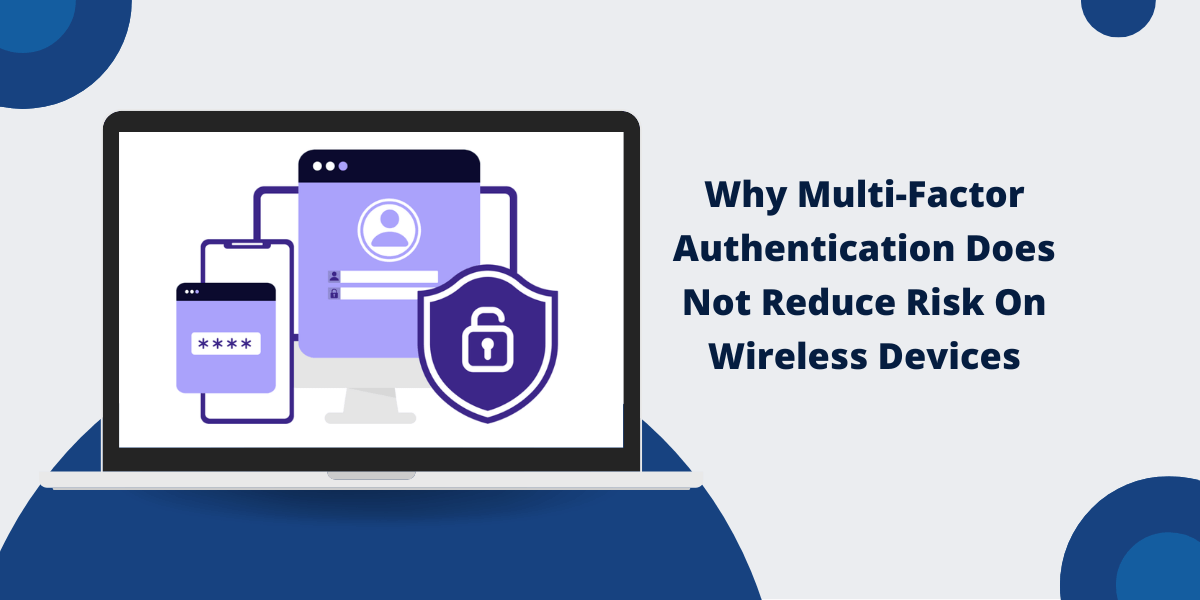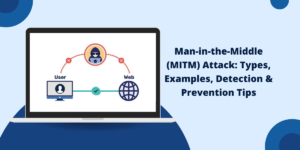Understanding Multi-Factor Authentication Limitations
The security strength of Multi-Factor Authentication does not protect against complex cyberattack methods. Research shows MFA-enabled accounts face reduced compromise risk but security problems can still allow attackers to bypass MFA on wireless devices.
Primary Vulnerabilities Affecting Wireless Devices
The mobile environment contains multiple attack vectors which specifically target MFA implementations:
- Fatigue Attacks: Users become victims of repeated authentication requests which lead them to approve one request through frustration or confusion.
- Phishing Attacks: Fake websites and applications with sophisticated designs successfully capture MFA codes because they target mobile browsers.
- SIM Swapping: Attackers use phone number hijacking to intercept SMS-based authentication codes which creates a severe security risk for wireless devices.
- Malicious Insider Threats: Internal actors who can bypass MFA systems through privileged access or social engineering
Statistical Reality of MFA Adoption
Despite the critical importance of multi-factor authentication, adoption rates reveal concerning gaps in protection:
|
Business Size |
MFA Adoption Rate |
Risk Level |
|
Small Businesses (≤25 employees) |
27% |
High |
|
Medium Businesses (26-100 employees) |
34% |
Moderate |
|
Large Enterprises |
Higher (specific data varies) |
Lower |
The Password Problem Persists
The 2022 data breach statistics show that 80% of incidents resulted from password compromises which proves MFA is essential for organizations. The high percentage indicates that MFA awareness does not eliminate substantial implementation gaps.
Wireless-Specific Attack Scenarios
1. SMS Interception on Mobile Networks
The infrastructure of wireless carriers contains vulnerabilities which enable attackers to:
- Attackers can intercept SMS authentication codes through these vulnerabilities.
- Attackers can redirect calls and messages to devices they control.
- The SS7 protocol weaknesses in cellular networks can be exploited by attackers.
2. Mobile App Vulnerabilities
Wireless devices face unique challenges:
- The security of MFA tokens used in applications becomes vulnerable when malware attacks these applications.
- The delivery of push notifications remains vulnerable to man-in-the-middle attacks.
- The security of biometric authentication systems can be compromised through attacks that target devices.
3. Network-Level Attacks
- Public Wi-Fi networks become vulnerable to evil twin attacks.
- The installation of fake base stations by attackers enables them to spoof cellular networks.
- The proximity-based attacks can be executed through Bluetooth and NFC exploitation.
Concrete Attack Demonstrations
Security researchers have demonstrated concrete attacks on five foremost multi-factor authentication schemes, proving that theoretical vulnerabilities translate into real-world exploits. These attacks particularly target:
- Time-based authentication tokens through clock synchronization attacks
- Hardware security keys via signal interception
- Biometric systems through spoofing techniques
- Location-based authentication via GPS manipulation
The False Security Paradigm
Organizations that implement MFA systems often develop a false sense of security because they believe it offers complete protection. This leads to:
- Reduced vigilance in other security areas
- Over-reliance on MFA as a single point of failure
- Inadequate user training about MFA limitations
- Insufficient monitoring of authentication anomalies
Mitigation Strategies for Wireless Environments
Enhanced Security Measures
- Multi-layered approach beyond traditional MFA
- Device attestation and health verification
- Behavioral analytics to detect anomalous access patterns
- Zero-trust architecture implementation
Best Practices for Mobile Security
- Avoid SMS-based MFA in favor of app-based authenticators
- Implement device binding for additional verification
- Use hardware security keys when possible
- Deploy mobile device management (MDM) solutions
Industry Response and Evolution
The cybersecurity industry recognizes these limitations, leading to:
- Passwordless authentication development
- Risk-based authentication systems
- Continuous authentication technologies
- AI-powered threat detection integration
Final Thoughts
Organizations need to understand the essential role of Multi-Factor Authentication as a security component yet recognize its boundaries especially when operating in wireless networks. The statistics demonstrate that MFA adoption rates stay at dangerous levels while wireless-specific vulnerabilities continue to weaken its protective capabilities.
A complete security approach should position MFA as a defensive element within multiple protective measures instead of depending on it as the sole solution. Organizations need to provide user education while implementing wireless-specific security measures and should maintain realistic expectations about MFA protection in mobile environments.
Frequently Asked Questions (FAQs)
Can multi-factor authentication be hacked on wireless devices?
Hackers can bypass multi-factor authentication through SIM swapping attacks or malware on wireless devices. Mobile devices face unique security risks like public WiFi vulnerabilities and app-based exploits that MFA cannot prevent.
What are the limitations of multi-factor authentication?
Multi-factor authentication cannot protect against device theft or compromised credentials. Users often disable MFA for convenience on mobile devices. Security tokens and authentication apps can be cloned or intercepted on wireless networks.
Why is MFA not enough for mobile security?
Mobile devices connect to multiple unsecured networks daily. MFA only verifies user identity but does not encrypt data transmission. Malicious apps can capture authentication codes before they reach secure servers.
Does MFA protect against wireless network attacks?
MFA does not secure wireless network connections or prevent man-in-the-middle attacks. Hackers can intercept authentication codes through fake WiFi networks. Network vulnerabilities exist independently of MFA protection.
What security measures work better than MFA for wireless devices?
End-to-end encryption provides stronger protection than MFA alone. Virtual Private Networks (VPNs) secure all wireless data transmission. Device-level security controls offer more comprehensive protection against mobile threats.

Priya Mervana
 Verified Web Security Experts
Verified Web Security Experts
Priya Mervana is working at SSLInsights.com as a web security expert with over 10 years of experience writing about encryption, SSL certificates, and online privacy. She aims to make complex security topics easily understandable for everyday internet users.



